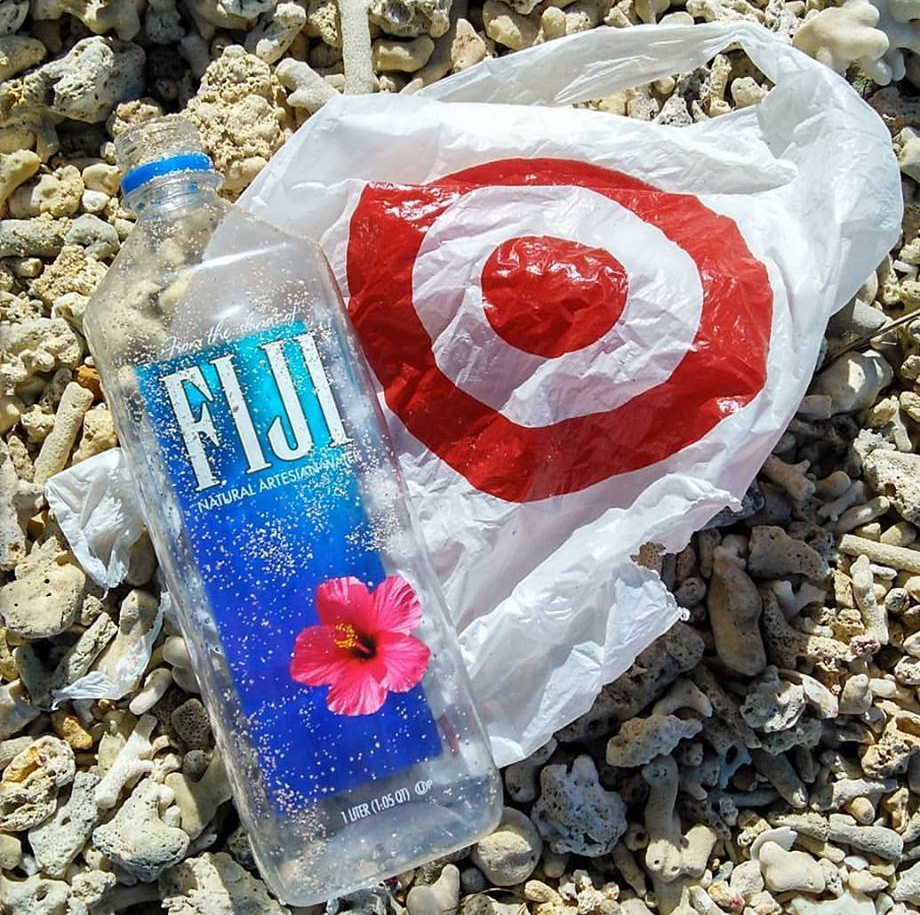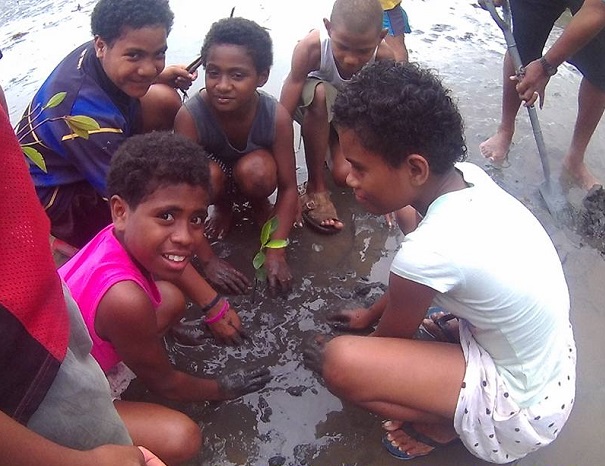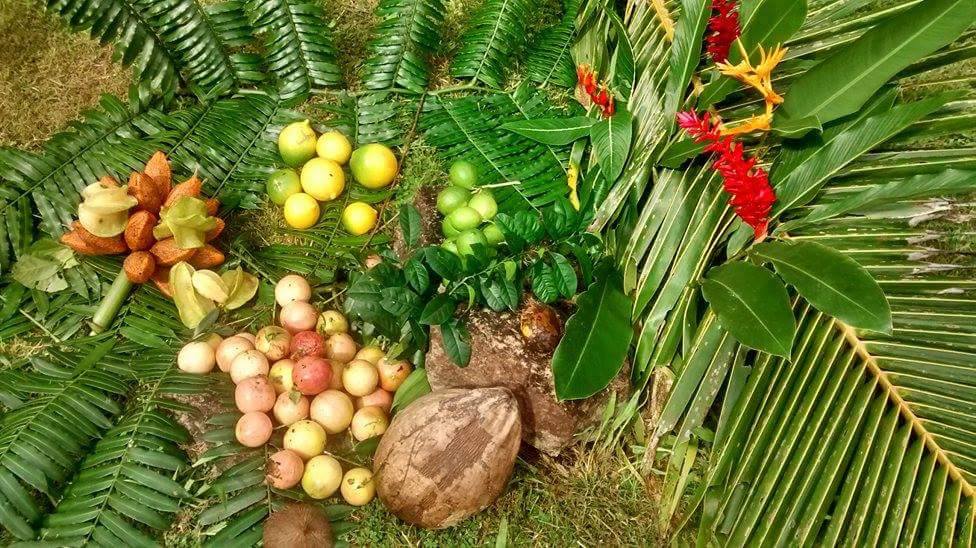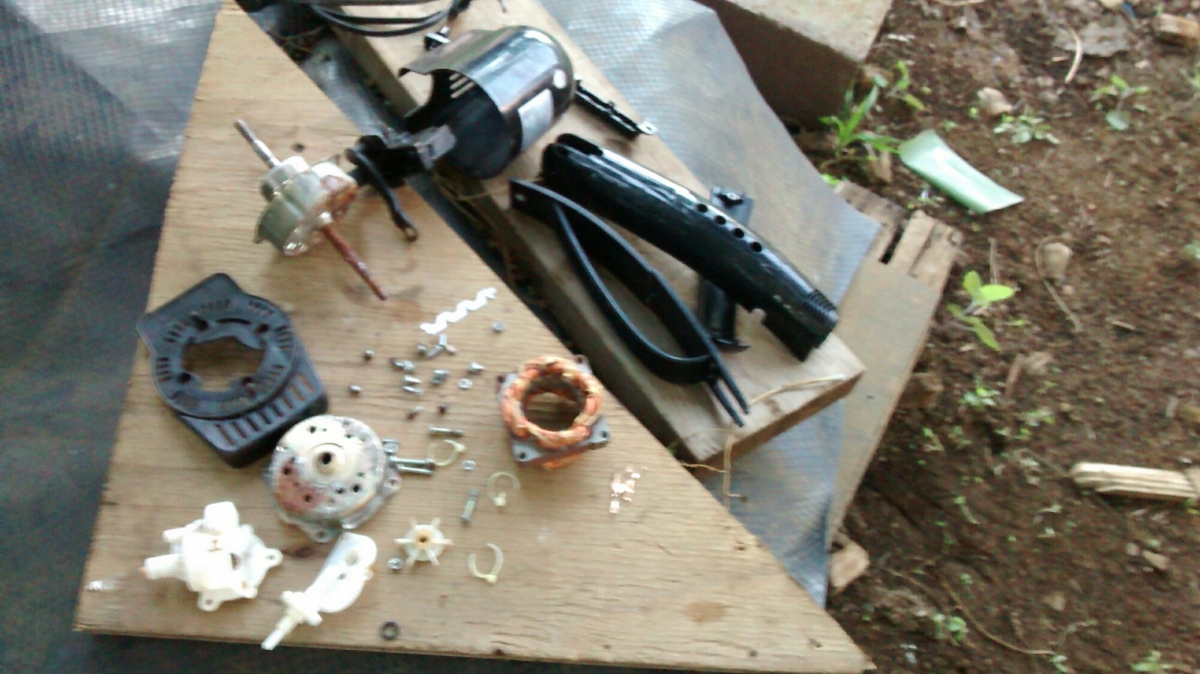
Over the last decade I have gone from a person who was oblivious to the issues of plastic pollution to being a person who daily advocates for people to give up their consumption of single use plastics every time it is possible. I am not alone. There are many groups that you probably haven’t heard of who are fighting on a daily basis trying to bring attention to this issue. The belief that because we properly dispose of the byproducts or waste materials, in this case the plastic bottle; that our duty is complete. Unfortunately, such a strong faith in the system is proving to be incomplete. As reported in the New York Times article, Plastics Pile Up as China Refuses to Take the West’s Recycling; England is enacting measures like plastic bag bans and mandates to reduce plastic packaging in grocery stores. However they report that, “Experts say the immediate response to the crisis may well be to turn to incineration or landfills — both harmful to the environment.”
While living in Fiji and the Samoan islands, I spoke firsthand with village elders in Levuka, Fiji who expressed concern that the plastics collect and their only option is to burn the plastics. Their concern is the same one facing nations around the world – what actually happens to the plastic once it’s consumed? Currently, mass recycled plastics of certain grades can be utilized to manufacture new plastic packaging. In the case of plastic bags, most are made of LP gas and can be processed quite effectively. Through mass recycling programs at grocery stores throughout the United States these bags are processed time and again. The quantity of bags captured meets minimum capacity requirements for this industry to be quite effective.
This is is not same however for plastics like beverage containers and statistics are even worse for materials like Styrofoam which are virtually unrecyclable. In addition to the issue of the statistical ability of plastics to be recycled or reprocessed into new manufactured goods, there are greater levels of civic responsibility that require cultural shifts of thinking to understand how our consumption impacts the world as a whole. For example each case of bottled water uses approximately 3 quarts of oil burned into the atmosphere to manufacture and deliver. During this time of transport, plastics often become heated. On the website Dr Geo, in the article Plastic Water Bottles exposed to Heat can be Toxic, it is reported that
“Virtually all plastic water bottles are made from polyethylene terephthalate (PET) and typically contain 190–300 mg/kg of antimony. Bottled waters become contaminated during storage due to a release of antimony from PET plastic. Actually, almost all packaged drinks are made from PET plastic. This includes milk, coffee, and acidic juice, among types of food containers.”
In addition to Antimony, Bisphenol – A (BPA) is another chemical that is released when beverage plastics are exposed to heat or sunlight. High level exposure to BPA causes early onset puberty and ovarian and breast cancer. Additionally, according to breastcancer.org’s article Exposure to Chemicals in Plastic, “BPA also seems to affect brain development in the womb. In 2011, a study found that pregnant women with high levels of BPA in their urine were more likely to have daughters who showed signs of hyperactivity, anxiety, and depression. The symptoms were seen in girls as young as 3.”
Simply looking at these three issues – human DNA modification that impacts fetus in the womb and the generation of cancer cells, the carbon emissions that continue to impact global climate change and the overall ways plastic pollution is impacting our planet present a solid foundation for one specific plan of action. There is one additional argument that I would like to ask you to consider. Financial freedom through contentious practices.
Here’s the consideration I encourage you to make. Depending on your preference from a standard glass jar to a high end vacuum sealed stainless steel hot/cold container – one could spend $1.00 – $30 US on average for a portable, go anywhere container. Depending on the climate and quantity needed, many people even carry water bags with drinking hoses for drinking while working or walking. These bags can carry 3 litters or about 1 gallon of water are are designed for backpacks. Additionally, there are places in the world where drinking water mean carrying jugs miles to gather all that can be physically carried – sometimes hours a day. For most readers who have to purchase clean water, standard Ultra Violet (UV) and Reverse Osmosis Machines (RO) are often available at village stores for the equivalency of $0.50 US per gallon, when clean in home tap water is not an option. Using a standard 12 oz bottle for calculation purposes: one case (24 bottles) of water is 2.25 gallons of water. At a cost of $0.50 – $2.50 per bottle the price of water before factoring the cost of recycling the plastics is $5.00 – $25.00 per gallon. If you drink 2.25 gallons or one case of bottled water per week – the average person will spend between $260 -$1385 per year in water. If a single person was to drink only 2.25 gallons of water per week (one case of bottled water) the cost difference in buying machine based water ($58.50) versus prepackaged plastic bottles of water would be between $200 to $1150 a year in money saved. According to medical information from sources like this article from the Mayo Clinic, the average person should drink about 1/2 gallon or 2 liters of water per day or 3.5 gallons per week.
Many reading this might think that spending $1000 US or more per year on water is no big deal. This however isn’t true for many people around the world. Look at example the people of Fiji who are fighting for a $4.00 Fijian wage. This is the equivalence of $2.00 US an hour. To buy bottled water that would mean spending 3.5 months of wages at 40 hours per week to buy bottled water each year ( at $0.50 a bottle cold in the store). When thinking about changing the standards of poverty, sustainability and climate change – cost savings alone stands as a primary reason to develop clean water infrastructure as part of the process of eliminating plastic bottled water consumption.
Please remember that my considerations haven’t even factored the savings if you live in places where the water coming into your home is regulated to be clean and safe for your consumption. When looking at the cost of tap water, the price of $2.00 per THOUSAND gallons makes it’s own argument. Carry your own beverage container and fill it over and over again. This Money Crashers article will explain this more. The reality is that in order to make changes around the world, we need to first examine our own practices, and when possible consider how the financial savings could be used to positively impact others who don’t have,.
The first step then is finding yourself a nice sustainable beverage container to carry your water, coffee, tea with you where ever you may go. What are your thoughts, do you believe your actions would make a difference? Do you think this is important enough to tell other people about it?Please leave your comments or experiences below!!!












 Like any good explorer, I am working hard at and enjoying learning about the local food here in America Samoa. Here on this island there are a wide variety of fruit bearing trees. The most common of these are Esi or papaya, Coconut and Fai or Banana. Additionally Starfruit, passion fruit, limes and lemons are quite plentiful.
Like any good explorer, I am working hard at and enjoying learning about the local food here in America Samoa. Here on this island there are a wide variety of fruit bearing trees. The most common of these are Esi or papaya, Coconut and Fai or Banana. Additionally Starfruit, passion fruit, limes and lemons are quite plentiful.
 The event itself, while open to the public, did not have a large community participation of non medical personnel. Overall between the two delegations there appeared to be about one hundred people participating consistently over the week. Participating agencies were primarily government bodies and the attitude in general seemed to lack value toward NGO’s. Catering provided dozens of waste plastics from water bottles, Styrofoam packaging, plastic containers and non compostable sandwich bags.
The event itself, while open to the public, did not have a large community participation of non medical personnel. Overall between the two delegations there appeared to be about one hundred people participating consistently over the week. Participating agencies were primarily government bodies and the attitude in general seemed to lack value toward NGO’s. Catering provided dozens of waste plastics from water bottles, Styrofoam packaging, plastic containers and non compostable sandwich bags.








